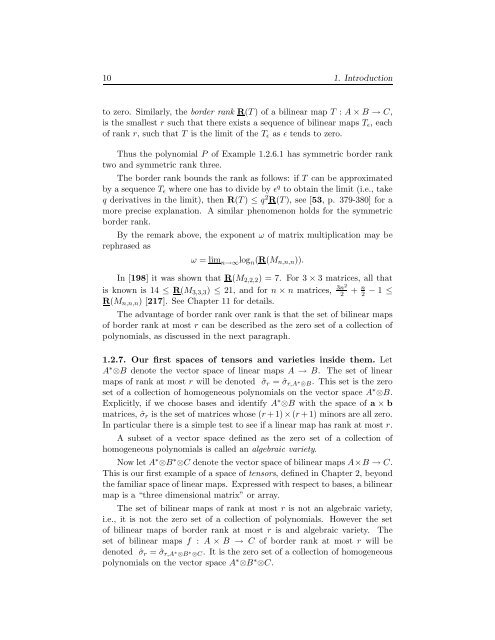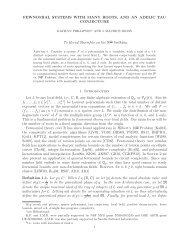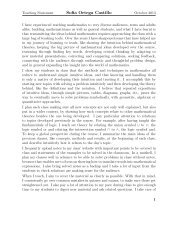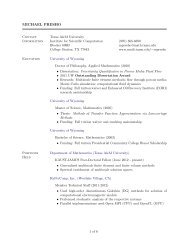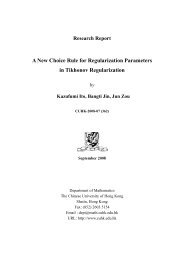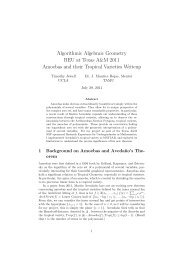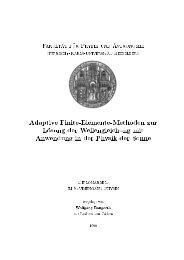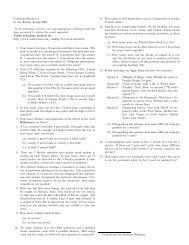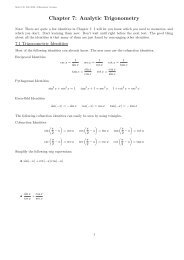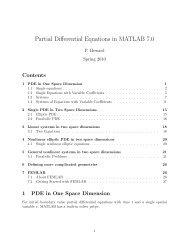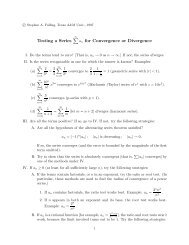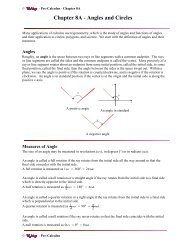Tensors: Geometry and Applications J.M. Landsberg - Texas A&M ...
Tensors: Geometry and Applications J.M. Landsberg - Texas A&M ...
Tensors: Geometry and Applications J.M. Landsberg - Texas A&M ...
Create successful ePaper yourself
Turn your PDF publications into a flip-book with our unique Google optimized e-Paper software.
10 1. Introduction<br />
to zero. Similarly, the border rank R(T) of a bilinear map T : A × B → C,<br />
is the smallest r such that there exists a sequence of bilinear maps Tǫ, each<br />
of rank r, such that T is the limit of the Tǫ as ǫ tends to zero.<br />
Thus the polynomial P of Example 1.2.6.1 has symmetric border rank<br />
two <strong>and</strong> symmetric rank three.<br />
The border rank bounds the rank as follows: if T can be approximated<br />
by a sequence Tǫ where one has to divide by ǫ q to obtain the limit (i.e., take<br />
q derivatives in the limit), then R(T) ≤ q 2 R(T), see [53, p. 379-380] for a<br />
more precise explanation. A similar phenomenon holds for the symmetric<br />
border rank.<br />
By the remark above, the exponent ω of matrix multiplication may be<br />
rephrased as<br />
ω = lim n→∞log n(R(Mn,n,n)).<br />
In [198] it was shown that R(M2,2,2) = 7. For 3 × 3 matrices, all that<br />
is known is 14 ≤ R(M3,3,3) ≤ 21, <strong>and</strong> for n × n matrices, 3n2 n<br />
2 + 2 − 1 ≤<br />
R(Mn,n,n) [217]. See Chapter 11 for details.<br />
The advantage of border rank over rank is that the set of bilinear maps<br />
of border rank at most r can be described as the zero set of a collection of<br />
polynomials, as discussed in the next paragraph.<br />
1.2.7. Our first spaces of tensors <strong>and</strong> varieties inside them. Let<br />
A ∗ ⊗B denote the vector space of linear maps A → B. The set of linear<br />
maps of rank at most r will be denoted ˆσr = ˆσr,A ∗ ⊗B. This set is the zero<br />
set of a collection of homogeneous polynomials on the vector space A ∗ ⊗B.<br />
Explicitly, if we choose bases <strong>and</strong> identify A ∗ ⊗B with the space of a × b<br />
matrices, ˆσr is the set of matrices whose (r+1) ×(r+1) minors are all zero.<br />
In particular there is a simple test to see if a linear map has rank at most r.<br />
A subset of a vector space defined as the zero set of a collection of<br />
homogeneous polynomials is called an algebraic variety.<br />
Now let A ∗ ⊗B ∗ ⊗C denote the vector space of bilinear maps A×B → C.<br />
This is our first example of a space of tensors, defined in Chapter 2, beyond<br />
the familiar space of linear maps. Expressed with respect to bases, a bilinear<br />
map is a “three dimensional matrix” or array.<br />
The set of bilinear maps of rank at most r is not an algebraic variety,<br />
i.e., it is not the zero set of a collection of polynomials. However the set<br />
of bilinear maps of border rank at most r is <strong>and</strong> algebraic variety. The<br />
set of bilinear maps f : A × B → C of border rank at most r will be<br />
denoted ˆσr = ˆσr,A ∗ ⊗B ∗ ⊗C. It is the zero set of a collection of homogeneous<br />
polynomials on the vector space A ∗ ⊗B ∗ ⊗C.


